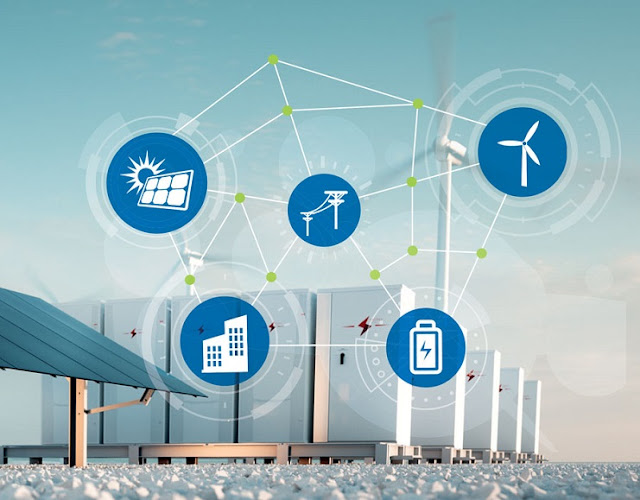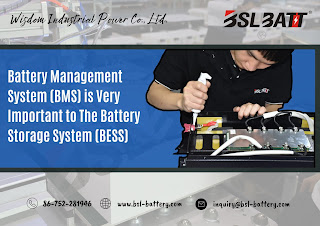Photovoltaics and BESS (battery energy storage system) - what is there to know?
How a photovoltaic system works - here's everything you need to know about solar panels and BESS (battery energy storage system) and all the benefits of a solar system.
Thanks to a photovoltaic system we can convert sunlight into electricity and use it for our consumption needs. Combining a photovoltaic accumulator we can store the energy produced in excess to use it later. Let's see now all there is to know about the functioning and advantages of a photovoltaic system, and how it represents a sustainable choice towards the environment.
The photovoltaic system, how does it work?
A photovoltaic system is a system that, thanks to the installation of solar panels, allows to convert sunlight into electricity, using the clean energy of the sun for domestic and industrial consumption. Once positioned outside the building, the silicon solar panels absorb sunlight, which will be transformed into alternating current through a particular device called an inverter.
The energy produced during the day by our photovoltaic system will allow us to meet our daily energy needs, while the energy accumulated in excess can be resold to the electricity network through the exchange on site. Installing a photovoltaic system allows us to move away from traditional fossil fuels, such as oil, gas, and coal, to focus on renewable energy sources, such as solar.
Renewable sources, which include wind, hydro, and biomass combustion, provide a safe, clean, and potentially endless energy alternative.
According to a 2019 report by the IEA (International Energy Agency), clean energy supplies, thanks primarily to solar energy, are expected to increase by 50% over the next 5 years. At present, renewable energy sources represent 26% of the world's energy needs but the targets are 30% by 2024 if we want to safeguard the planet and the climate.
Exploiting these sources of clean energy allows us to cancel our C02 emissions into the atmosphere, reducing pollution and optimizing our consumption, guaranteeing a secure economic return, especially on our electricity and gas bills.
Photovoltaics without sun, does it really work?
Although sunny days allow a greater accumulation of energy, photovoltaic panels are able to work perfectly even without the sun, when the sky is covered by clouds.
This is because the panels are able to capture any solar radiation emitted even during rainy days when solar radiation is very low.
The solar panels are also specially built to withstand bad weather, such as hail or extreme temperature changes. Their structure is in fact specially made to withstand any kind of adversity: the resistance of photovoltaic panels is tested in advance through a series of tests, including the robustness to large hail (2.5 cm in diameter).
Only once these tests have been successfully passed, the panel can obtain the official certification and be sold on the market.
Photovoltaics battery storage, what is it?
Taking advantage of photovoltaic battery storage is possible to store the energy produced during the day by solar panels that we have not yet had the opportunity to exploit. Through special batteries that make up the photovoltaic battery storage, we can store the excess energy and use it later, for example during the night when it is not possible to access the sunlight.
In this way, not only we will not waste energy, but we will be able to use the accumulated energy in our possession, without having to buy it from the local supplier. The energy accumulator provides us with an additional tool to optimize our energy consumption, increase the efficiency of our photovoltaic system, reducing waste and costs of the bill. Before installing a photovoltaic system with BESS (battery energy storage system) it is advisable to evaluate the daily consumption habits.
A photovoltaic system without BESS (battery energy storage system) allows us to use the energy when it is produced, which means that we will obtain greater savings if we use the energy during the day. But this is not always a viable option. If, on the contrary, our energy habits lead us to consume energy mainly in the evening and at night (F23), a photovoltaic BESS (battery energy storage system) will certainly be a preferable choice.
Knowing your consumption habits is very important because it allows us to understand where we can save money, as well as giving us the right parameters to choose the most convenient electricity and gas tariff for us. If we are about to move to a new house and we want to keep the same supplier, it will be necessary to apply for a change of utilities, so as to change the data of the owner of the bills.
A photovoltaic system, between sustainability and bill saving
A photovoltaic system represents a choice of strong sustainability towards the environment, giving us the possibility on the one hand to zero C02 emissions, on the other hand, to exploit renewable energy. By installing a photovoltaic system it will be possible to achieve energy self-sufficiency and reduce electricity and gas bills while offering an undoubted benefit to our planet.
In addition to providing a clean and sustainable alternative to fossil fuels, thanks to a photovoltaic system we can benefit from great economic savings. Before understanding how much you can save with photovoltaics, it is important to understand the mechanism of self-consumption, i.e. the system common to several production plants, which allows you to gain.
Photovoltaic savings are calculated on the amount of energy that a domestic customer is able to self-consume. The greater the amount of self-consumption energy (therefore derived exclusively from solar panels) the greater the savings we will obtain.
Each kWh of electricity produced by our system is equivalent to a kWh of energy that we will not have to buy from the local supplier, allowing us to save on the bill. If then, the energy produced during the day by our photovoltaic system is equal to the energy consumed, it means that we will be 100% self-sufficient from the energy point of view, zeroing the cost of bills.
There are also other ways to save money with photovoltaics.
The energy produced by the panels that we do not consume, we can give it to the Utility Grid Corporation thanks to the mechanism of the exchange on the spot: the greater the amount of energy that we will give, the greater will be the revenue obtained.
It is also possible to integrate a photovoltaic system with a home automation system, to further increase energy optimization and maximize the production of clean energy. For efficient performance of the home automation system it will be necessary to have an internet connection that is stable and fast: comparing the best internet offers it will be easy to find the one that best suits our connection needs.
We must not forget that we can start to get a real savings only when we will have returned the costs incurred to install the photovoltaic system. Generally, this happens after 4-5 years from the installation, taking into account that a system has a duration of about 25-30 years.
To date, renewable energy is the second-largest source of electricity in the world and photovoltaics will play a crucial role in the new growth of renewables in the world, thanks to the decrease in the price of solar energy that is expected to drop by 20-35% by 2024.
If you are considering photovoltaic and BESS(battery energy storage system) for your home or business, visit the BSLBATT website to learn about our energy storage battery products, or ask us for a solution!
<script src="https://platform.linkedin.com/badges/js/profile.js" async defer type="text/javascript"></script>







评论
发表评论